



Feral Pig Control by Trapping
Information on the siting, design and construction of traps to capture wild pigs from David Lund, Ted Knight and Gary Martin for the Western Australian Department of Agriculture and Food.Trapping can be an important means of reducing feral pig numbers. However, the technique is time consuming and traps are expensive to construct and maintain. This means trapping is best used either where poisoning is impractical, or as a follow-up control measure after poisoning.
The effectiveness of trapping is influenced by site selection, free-feeding, trap type and construction method, and on the behaviour of the pigs. Best results are achieved when the pigs are short of food and the trap sites have been carefully selected.
Once the decision to trap has been made, keep interference to a minimum. In particular avoid shooting and do not allow disturbance by dogs.
Trap Site
Traps should be sited where pig activity is already concentrated. Examples include beside pads or resting areas, near feeding areas in crops or pasture, or close to watercourses or wallows.
Free-feeding
Free-feeding is essential to attract pigs to the traps and should begin before the traps are constructed. A variety of foods may be offered including grain, feed pellets and fruit. Water has also proved to be attractive to feral pigs in dry conditions.
Do not start building the traps until food is regularly being taken by feral pigs. Ensure that food is being consumed by feral pigs and not by other species such as kangaroos or domestic stock. At this time, restrict free-feeding to the area close to the traps. If the pigs are wary, construct the traps in stages over a few days and fix them open to allow free entry and exit to the pigs. Ensure that plenty of feed is available both outside and inside the trap. Do not ‘arm’ the traps until pigs readily enter them to feed.
Trap Design and Construction
Three basic trap designs are in common use. All are steel mesh live traps that the pigs enter through a one-way gate. Traps must be very robust and strongly anchored; steel mesh panels are welded or wired together and wired to star pickets driven (on an angle) securely into the ground. Bury the base of the mesh for extra security, making sure it does not keep the entrance open when the trap is armed. Roof the trap with steel mesh if the trap walls are less than 1.75 metres high.
Panel trap
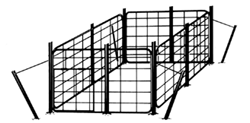
This is constructed of at least four rectangular weldmesh panels that may be supported on a steel frame. Panels should be a convenient size for transport and handling. Traps are erected to form an enclosure, supported by star pickets angle-driven into the ground outside the trap at the corners and centres of the panels (Figure 1).
Bracing with cross-wires between the pickets may strengthen the trap to withstand the impact of large boars. Entry to the trap is by a side-hinged or vertical gate (see Figures 5 or 6).
Box trap
This is a transportable cage made of weldmesh on a steel frame. It is usually small enough to be carried in the tray of a utility. Entry can be via a side-hinged or vertical gate.
Silo trap
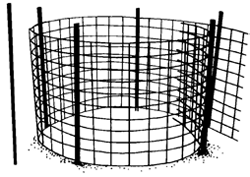
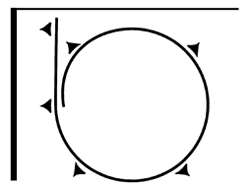

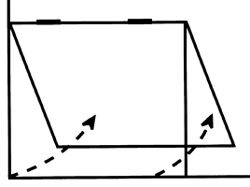
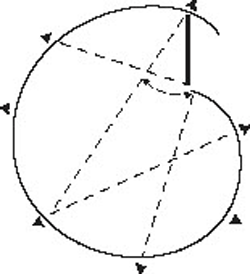
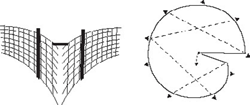
The silo trap is made from one or more lengths of weldmesh and is superior in strength and capacity to the panel trap. However, the silo trap is more difficult for one person to construct, dismantle and transport than the other designs and is more suited to semi-permanent trap sites.
Weldmesh silos, often used for temporary grain storage, can be used for this purpose. The trap is wired to supporting star pickets, angle-driven into the ground and may be braced with cross wires. The weldmesh itself can be bent into the shape of a ‘6’ or a heart to form a funnel gate (see Figures 2, 3 and 4). Alternatively, the trap can be fitted with a hinged gate.
Gates
The gate is the key part of the trap and must be light enough for pigs to push open readily, but must close quickly and positively.
During free feeding, the gate may be omitted or tied fully open.
During trapping, the gate should initially be held open with a stick which will be dislodged once a pig enters the trap. Other pigs should then follow.
Vertical gate
This gate is hinged at the top and closes under its own weight (see Figure 5). The closing door may be noisy enough to frighten pigs outside the trap; reduce noise by wiring rubber padding to the gate frame.
Side-hinged gate
This gate (see Figure 6) requires a closing mechanism in the form of a spring, elastic strap, or pulley and counter-weight. It has the advantage (when adjusted correctly) of opening and closing easily and quietly, and for these reasons is perhaps the best designed pig gate.
The gate can be constructed out of an old bed frame or similar, and can be incorporated into a silo or panel trap. The frame may need padding to reduce noise. Trip wires can be used to prevent gates shutting until one or more pigs are well inside the trap.
Funnel gate
This gate uses the spring tension of the weldmesh itself to provide its closing action. The free ends of the weldmesh panels are bent inward under tension forming either a figure ‘6’ or heart shape (see Figures 3, 4 and 7). Pigs enter by pushing between the panels, which spring shut behind them.
If there is too much tension in the panels, pigs may be reluctant to enter. The tension should be just sufficient to close or nearly close the funnel. Adjust the tension by bending the weldmesh.
The tynes on the end of the gate should be turned inwards to prevent pigs from backing out.
Precautions
Check traps at least daily to minimise the time that trapped pigs are held. Pigs are vulnerable to hot, dry conditions. If the trap site is exposed, provide shade.
Trapped pigs will be stressed and can be aggressive and dangerous; they should be killed humanely with a shot to the head.
Occasionally, kangaroos or domestic livestock may enter traps. Leave traps open if it is impossible to check them regularly.
For further information on trapping, free-feeding or control of feral pigs contact the Department of Agriculture and Food or the Pest and Disease Information Service on Freecall 1800 084 881, email [email protected] or visit agric.wa.gov.au.
October 2013







